Results
-
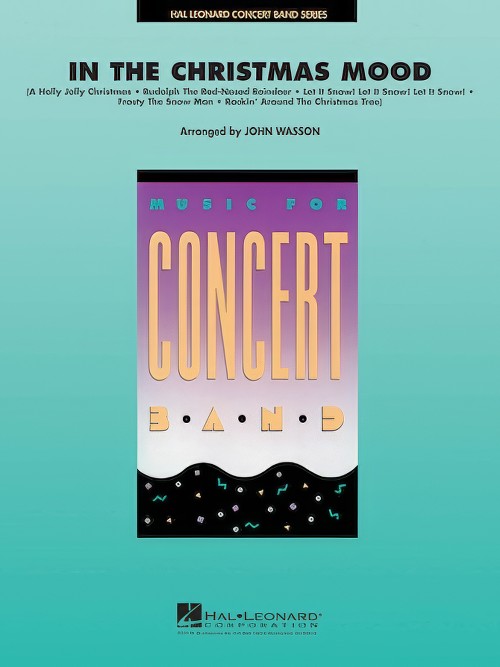 £64.99
£64.99In the Christmas Mood (Concert Band - Score and Parts) - Wasson, John
What a clever idea! Take several holiday favourites and mix them with the hottest musical style going today. The result is a fabulous medley including A Holly Jolly Christmas, Rudolph The Red-Nosed Reindeer, Let It Snow! Let It Snow! Let It Snow!, Frosty The Snow Man, and Rockin' Around The Christmas Tree, all gift wrapped with the classic In The Mood
Estimated dispatch 7-14 working days
-
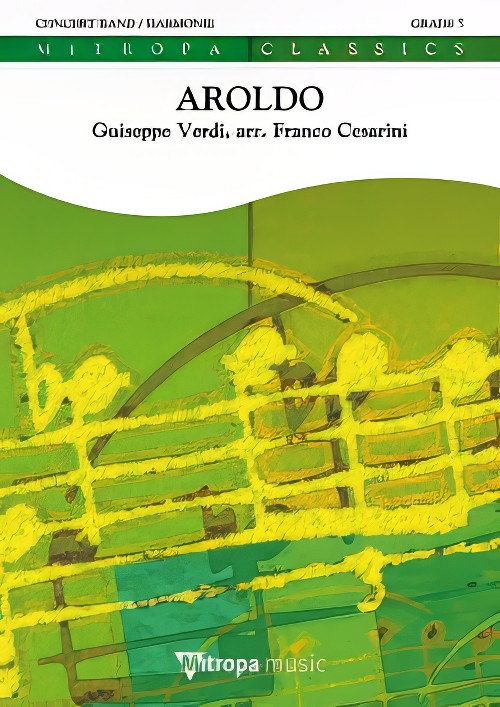 £139.99
£139.99Aroldo (Concert Band - Score and Parts) - Verdi, Giuseppe - Cesarini, Franco
Aroldo, number 22 of the 32 operas written by Verdi, is certainly not one of the best-known works from "the genius of Busseto." Written in 1857, it is in fact a remake of the 1848 opera Stiffelio, which told a story of adultery and which was censored for its "indecent" content. Verdi found the censorship of Stiffelio unacceptable, and with a performance in Verona approaching at the start of 1851, he wrote to his editor, Ricordi: "If my libretto is censored, it will not be possible to obtain the effect I desire, so I would rather wait until I can rewrite the last scene." But the modifications to Stiffelio did not stop there. The setting, the historical period and the finale were also completely changed. In the process of converting Stiffelio to Aroldo, Verdi no doubt succeeded in strengthening certain moments. However, the fame of the three operas he had written in the meantime - Rigoletto, Il Trovatore and La Traviata - did not allow Aroldo to receive the recognition it deserved. The opera's symphony is indeed a superb work and contains moments of outstanding lyricism. The trumpet solo in the introduction is the longest written by Verdi for this instrument.Duration: 8:45
Estimated dispatch 7-14 working days
-
 £2.95
£2.95Holiday Favorites (2 Part Choral Octavo) - Emerson, Roger
Don't miss this medley of holiday favorites! Concert band (Gr. 2) and String arrangements by Paul Lavender also available. Includes: Let It Snow! Let It Snow! Let It Snow!, Rudolph the Red-Nosed Reindeer, Jingle-Bell Rock, Silver Bells, Frosty the Snowman. Duration: 6.30
Estimated dispatch 7-14 working days
-
 £2.95
£2.95Holiday Favorites (3 Part Mixed Choral Octavo) - Emerson, Roger
Don't miss this medley of holiday favorites! Concert band (Gr. 2) and String arrangements by Paul Lavender also available. Includes: Let It Snow! Let It Snow! Let It Snow!, Rudolph the Red-Nosed Reindeer, Jingle-Bell Rock, Silver Bells, Frosty the Snowman. Duration: 6.30
Estimated dispatch 7-14 working days
-
 £2.99
£2.99Holiday Favorites (SATB Choral Octavo) - Emerson, Roger
Don't miss this medley of holiday favorites! Concert band (Gr. 2) and String arrangements by Paul Lavender also available. Includes: Let It Snow! Let It Snow! Let It Snow!, Rudolph the Red-Nosed Reindeer, Jingle-Bell Rock, Silver Bells, Frosty the Snowman. Duration: 6.30
Estimated dispatch 7-14 working days
-
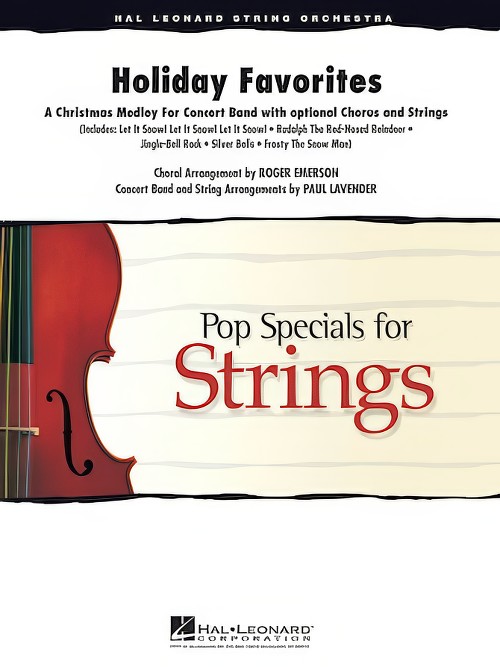 £38.50
£38.50Holiday Favorites (String Pak - Score and Parts) - Lavender, Paul
Don't miss this medley of holiday favourites for choir, band and opt. strings! Includes: Let It Snow! Let It Snow! Let It Snow!, Rudolph the Red-Nosed Reindeer, Jingle Bell Rock, Silver Bells, Frosty the Snowman.
Estimated dispatch 7-14 working days
-
 £67.50
£67.50You'll Never Walk Alone (Concert Band - Score and Parts) - Hammerstein & Rodgers - Oud, Thijs
This great football anthem is now infamous as the song sung by 'the kop' at Liverpool Football Club. It was however made famous worldwide when it was sung against the background of the Eiffel Tower to close the 1998 World Cup. It can now be played and enjoyed by your concert band with this great arrangement. An ideal piece to close any concert.Duration: 2:10
Estimated dispatch 7-14 working days
-
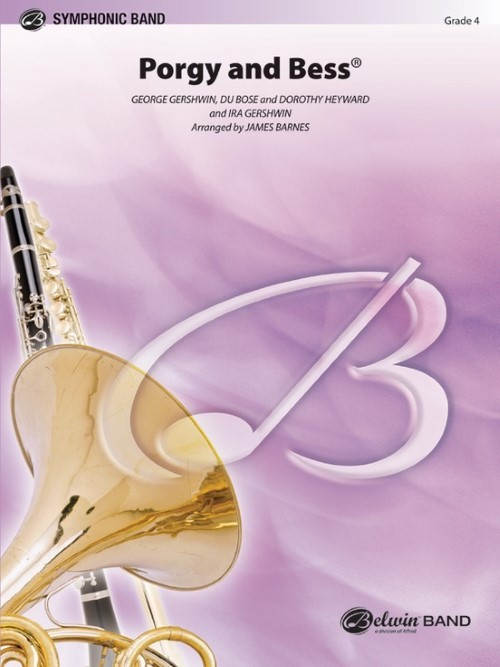 £92.50
£92.50Porgy and Bess (Concert Band - Score and Parts) - Gershwin, George - Barnes, James
The music from this timeless masterwork has fascinated generation after generation. Oddly enough, at its premiere the critics presented mixed reaction: some calling it the pioneering work of a new folk-opera genre, and others condemning it as merely a succession of hit songs. Fortunately, time has secured its place in history. James Barnes has skilfully crafted a wonderful scoring of "I Got Plenty O' Nuttin'," "It Ain't Necessarily So," "Summertime," "Crab Man," and "Bess, You Is My Woman Now." Gershwin at his best!Duration: 8:15
Estimated dispatch 7-14 working days
-
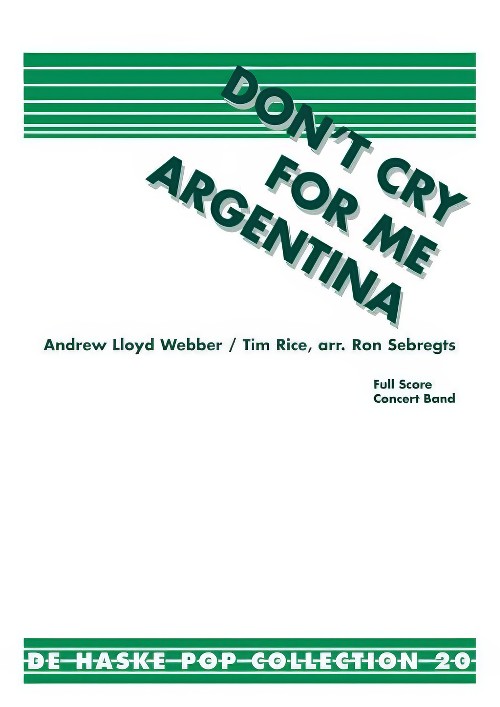 £76.99
£76.99Don't Cry for Me Argentina (from Evita) (Concert Band - Score and Parts) - Lloyd Webber & Rice - Sebregts, Ron
Don't Cry for me Argentina is the best-known song from the 1976 musical Evita. It was sung by Eva Peron when she was addressing the crowds amassed in the square below her balcony. More recently it was a hit for Madonna, who sang it in the 1996 film version of Evita. This arrangement for concert band retains the broad emotive melody of the original together with its intense emotion.Duration: 4:45
Estimated dispatch 7-14 working days
-
 £104.99
£104.99Ballabili (Concert Band - Score and Parts) - Verdi, Giuseppe - Van der Beek, Wil
Giuseppe Verdi's opera Macbeth was written in 1846/47 and premiered in Florence. It is based on Shakespeare's Macbeth and, unlike Verdi's other operas, had relatively little broad impact. This may be due to the difficulty of the singing voices, the lack of a love story or the dark mood, without humorous scenes.Musically, however, this opera is not uninteresting. Among other things, all the dramatic highlights culminate in artistically built ensembles. It also contains interesting instrumental effects, such as a wind orchestra under the stage in the witch scenes. This makes the witches and air spirits seem like from another world. In the 19th century opera, such a wind band, a so-called "banda" was not uncommon but an integral part of the scene.The Ballabili comes from Act III of Verdi's opera MacBeth. Ballabili is the plural of the Italian ballabile, meaning "danceable." It can also mean a dance performed by the corps de ballet, or by the chorus in an opera; or the music to accompany this dance.Duration: 2:15
Estimated dispatch 7-14 working days
